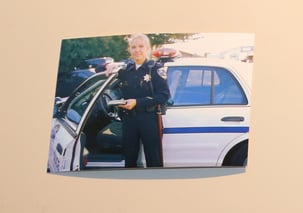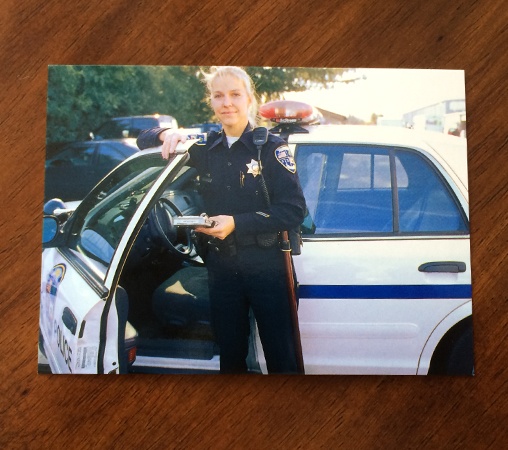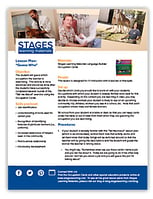Guess Who Lesson Plan
Lesson Overview:
Students increase their understanding of jobs, tools used for certain jobs and identify features of particular workers by guessing which occupation the teacher is describing.
Objective:
The student will guess which occupation the teacher is describing. This activity is more advanced and should be done after the students have successfully completed several rounds of the “Tell me About” exercise using the Occupation Cards.
Skills Practiced:
- Job identification
- Understanding of tools used for certain jobs
- Recognition of identifying features of particular workers (i.e., uniforms)
- Increased awareness of helpers seen in the community
- Part-to-whole relationship
- Vocabulary development
Materials Needed:
- Stages Learning Materials Language Builder Occupation Cards
People:
- This lesson is designed for 1:1 instruction with a teacher or therapist.
Set Up:
Decide which cards you would like to work on with your students. Occupations with which your student is already familiar work best for this activity. Depending on the content you are teaching in class, you may decide to choose workers your student is likely to see on an upcoming community trip, athletes, workers you see in a school, etc. Note that each occupation shows male and female workers.
Sit across from your student at a table or desk so that you can keep cards under the table or out of view from them when they are guessing the occupation you are describing.
Procedures:
-
Model what you’d like your student to do by choosing a card (for example, firefighter, #44) and placing it on the table facing your student. Tell your student that in a minute you won’t let them see the card, but that it is okay for them to see it now.
-
Then tell your student about the worker (for example, “The firefighter drives a big red truck”; “The firefighter carries a hose”; “The firefighter wears a special uniform to keep him safe”).
-
Then ask what job you were describing.
-
Because your student can see the card on the table, they should easily be able to identify the occupation you were talking about.
-
You may choose to model a few cards in this manner until you feel that your student understands what will be expected of them, letting them know each time that they will not be able to see the card once the lesson begins.
-
-
If your student is already familiar with the “Tell Me About” lesson plan (which is recommended), remind them how that activity works and let them know that today things will be switched around so that the teacher will be giving the descriptions and the student will guess the worker the teacher is talking about.
-
You might say, “Sometimes when we use these cards I name a job and you tell me about it. Today we are going to do it the other way around: I will tell you about a job and you will guess the job I’m talking about.”
-
-
When the student understands the activity, let them know you are going to choose another card and this time it will be a secret.
-
Choose a card (for example, police officer, #89) and keep it from the student’s view.
-
Begin to describe the worker in the picture with 3 or 4 statements.
-
For example, “I’m thinking of a worker who wears a badge, drives a car with flashing lights, and can help people who are in trouble.”

-
Then ask your student to, “Guess who it is.”
-
Depending on your student’s vocabulary, encourage them to use complete sentences to talk about the worker.
-
“You’re thinking of a police officer.” rather than, “Police officer.”
-
If your student has trouble guessing the worker, feel free to show them the photo and restate your descriptions.
-
-
Repeat for the remainder of the cards
-
Shuffle and repeat
-
For a more advanced variation of this lesson, place 2 or 3 occupation cards (one of which is the worker you are describing) face up on the table in front of your student. Describe the card as before, perhaps using statements which could be true for more than one of the workers to make it more challenging for your student to determine the worker you are describing.
-
For example, if you are describing the veterinarian, #109, you could show that card along with the zoo keeper, #115, and the nurse, #78. Statements about taking care of the sick, working with animals, and working inside a hospital could be describing 2 of the cards, so students need to pay attention to other clues in order to correctly guess the worker being described.
-
![]()

Jenna Wharff, Ed.M.
Jenna Wharff is a special education teacher at HOPEhouse at Cotting School, a transitional boarding school for students age 17-22 with special needs, in Lexington, MA. She specializes in helping her students prepare for life after high school by teaching independent living, vocational, and social skills as well as practical academics and providing opportunities for her students to apply what they have learned in the classroom to their everyday lives. She aims to help students and their families make the transition from special education to adult services as smooth as possible, while providing her students with the skills and knowledge necessary to lead productive and meaningful lives after leaving HOPEhouse. Jenna received her Master's degree in Mind, Brain, and Education from Harvard Graduate School of Education in 2007.






